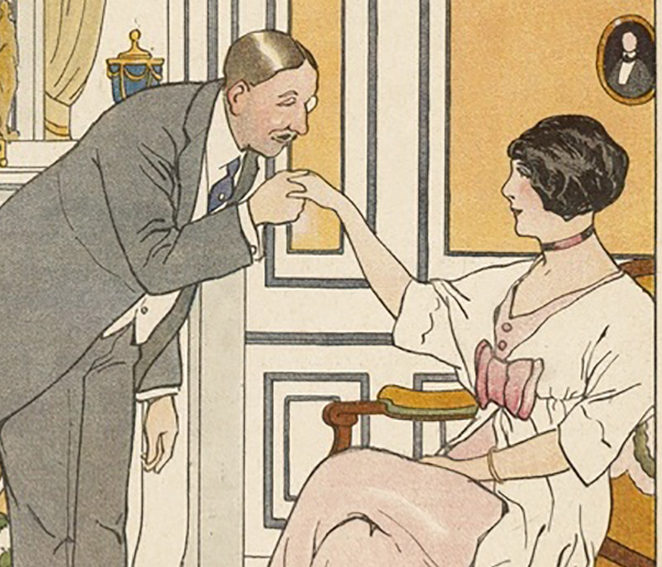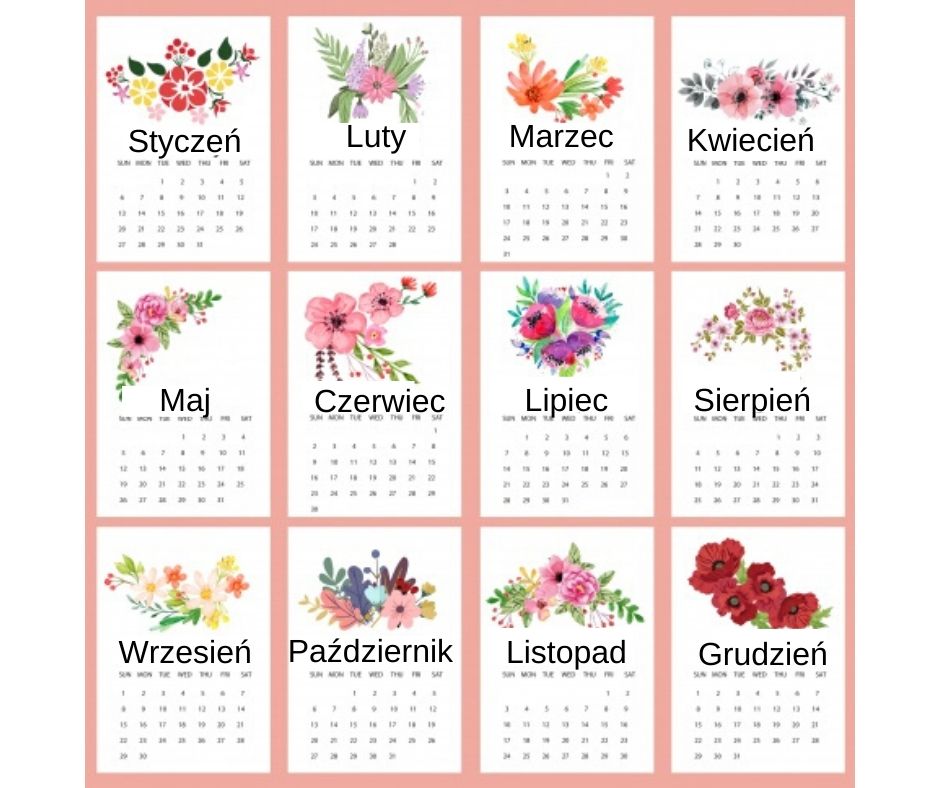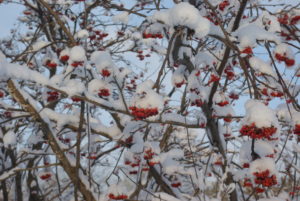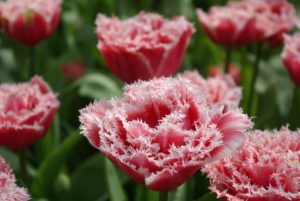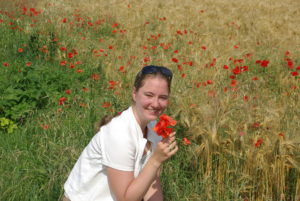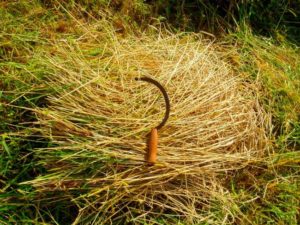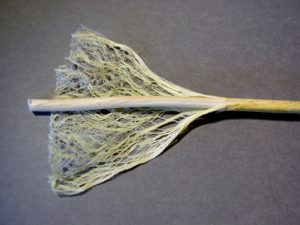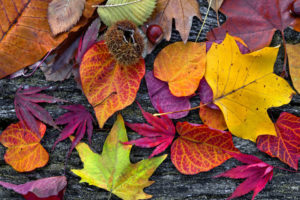Całuję rączki!
There is a common belief that kissing a woman’s hand is a very typical Polish tradition. To some extent it is true.

In the old days this gesture became an integral part of Polish social etiquette. Many old love letters are finished with the very moving expression “Całuję rączki!”. Nowadays Polish men continue this tradition regardless of endless discussions about its meaning and acceptability.
Personally I adore this gesture, it always touches me deeply. From the men that I communicate with I never feel any chauvinism in it, as many modern women tend to feel. On the contrary I always see it as a sign of high esteem and an extremely positive attitude towards me.
And yet the question remains: is this gesture really so Polish? And how to use it correctly? I have prepared an article about it for you, with a full translation into English!

Niewiele zwyczajów budzi tak wiele gorących dyskusji, jak całowanie kobiety w dłoń.
Są tacy, którzy uważają ten zwyczaj za przejaw najprawdziwszej elegancji i sposób na okazanie kobiecie szacunku. Przeciwnicy zwracają uwagę na seksistowski wydźwięk i niehigieniczny sposób składania pocałunku. Zwyczaj całowania kobiety w dłoń ma bardzo długą historię. Choć wielu wydaje się, że jest to typowo polskie zachowanie, nic bardziej mylnego. Kobiety w dłoń jako pierwsi całować zaczęli Hiszpanie, a od nich ten zwyczaj przyjęli Francuzi i Włosi. W dłoń nie całowano jednak wszystkich kobiet, lecz te o arystokratycznym pochodzeniu. Choć w Europie zwyczaj ten jest już rzadko spotykany, w Polsce wciąż wielu mężczyzn uważa go za wyjątkowo elegancki.
There are not many traditions which would raise such heated discussions as kissing a woman’s hand.
There are some people who consider this tradition to be a manifestation of atmost elegance and a way to show esteem towards a woman. Its detractors argue that it represents a sexist attitude and question its hygiene. The tradition of kissing a woman’s hand has a very long history. Although many believe it to be a typically Polish behaviour, nothing could be further from the truth. It was the Spanish who started kissing women’s hands first, then the French and Italians who adopted the practice from them. Not all women’s hands were kissed, but only those from high society. Although this tradition is rarely seen in Europe, in Poland many men still think it to be very elegant.
Jednak, jak z każdym zwyczajem, należy pamiętać o kilku podstawowych zasadach:
1. Całować kobietę w rękę wypada tylko, gdy znajdujemy się w sytuacji prywatnej i gdy kobieta nie ma nic przeciwko takiemu zachowaniu.Łatwo jest rozpoznać, czy kobieta w rękę chce być pocałowana, czy też nie. W większości sytuacji prywatnych to kobieta pierwsza wyciąga rękę. Jeśli wiec podaje ją w taki sposób, który wskazuje, że wyraźnie oczekuje tylko uściśnięcia, nie należy wykonywać żadnych innych gestów. Jeśli wyciąga ją skierowaną grzbietem do góry, można uznać, że nie ma nic przeciwko pocałunkowi.
Still, as with every tradition you should remember several basic rules:
1. It is only appropriate to kiss a woman’s hand when you are in a private situation and when the woman doesn’t object to such behaviour.It’s easy to tell whether a woman wants her hand to be kissed or not. In most private situations it’s the woman who first puts out her hand. So if she does it in a way that shows that she expects only to shake hands, you shouldn’t attempt any other gestures. If she holds out the back of her hand, you can conclude that she isn’t opposed to a kiss.

2. Bez żadnych wątpliwości całowanie w rękę jest niemile widziane w świecie profesjonalistów.
Etykieta biznesu jasno wskazuje, że w pracy nie ma znaczenia płeć, a pozycja, jaką zajmuje się w hierarchii. Tak, jak w dłoń nie całujemy mężczyzny będącego prezesem firmy, tak samo nie całujemy piastującej to stanowisko kobiety.
2. Without a doubt kissing hands isn’t welcome in the professional world.
Business etiquette entails that at work it’s not the gender that matters, but the position you have in the hierarchy. Just as we don’t kiss the hand of a male chairman of a company, neither do we do so with a woman who holds this position.

3. Jeśli uważamy ten gest za elegancki, to wykonywać go należy z tą właśnie elegancją i taktem.
Delikatnie ujmując jej dłoń, należy schylić się i delikatnie musnąć ją ustami. Podobnie jak niemile widziany jest siarczysty pocałunek, za niegrzeczne uchodzi też całowanie powietrza. Nie należy ciągnąć kobiecej dłoni ani w swoją stronę, ani w górę – jeśli wydaje się to konieczne, to znak, że kobieta ewidentnie w dłoń całowana być nie chce i należy z tego gestu zrezygnować.
3. If you think this gesture is elegant, make sure you do make it with the above mentioned elegance and tact.
Gently taking her hand, you should bend forward and touch it lightly with your lips. No contact at all is considered just as rude as a wet kiss. You should not pull a woman’s hand either towards you or upwards – if it seems necessary, it is a sign that the woman evidently does not want her hand to be kissed and you should abort the manoeuvre.
Całowanie kobiecej dłoni, choć powoli przechodzi do lamusa, w wielu kręgach wciąż jest popularnym zwyczajem, a dla przedstawicieli starszego pokolenia jest on wyrazem szacunku i przyjaźni, więc należy przyjąć go z uprzejmą cierpliwością. Kto wie, być może kiedyś będziemy za tym tęsknić?
Kissing a woman’s hand, although slowly becoming a thing of the past, still remains a popular tradition. For the older generation it is an expression of respect and friendship, so it should be accepted with friendly patience. Who knows, maybe one day we will miss it?
